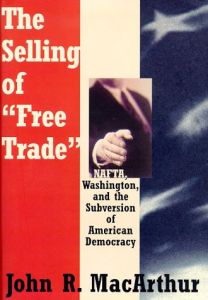
The Selling of Free Trade
Nafta, Washington, and the Subversion of American Democracy
Recommendation
John MacArthur, editor of Harper’s Magazine, is a persistent, resourceful and thorough reporter with an unapologetic opinion about the North American Free Trade Agreement (NAFTA). MacArthur makes no attempt to disguise his disdain for the trade pact, which he describes as a measure designed to institutionalize US exploitation of Mexican workers, or for the politicians, businessmen and lobbyists who supported it. In researching this book, MacArthur interviewed many of the key national and international players who helped create NAFTA and found rare interviews with others. He illustrates the debate by presenting an analysis of NAFTA’s impact on workers at a US factory and on the Mexicans who replace them. Ironically, he paints such an effective portrait of the inner workings of the Mexican maquiladoras factories that US business leaders reading this book might be further enticed to relocate. The finest features of the book are its exhaustive treatment of the law-making process and its lucid judgment of the Washington establishment. getAbstract recommends this book to students of politics or international trade, business leaders interested in gaining insight into the antiglobalization movement, and anyone seeking to pass a bill in Congress.
Summary
About the Author
John R. MacArthur is an award-winning journalist and author. He has been president and publisher of Harper’s Magazine since 1983.








Comment on this summary